Just out: Veronika Egetenmeyr, Die Konstruktion der ‘Anderen’. Barbarenbilder in den Briefen des Sidonius Apollinaris, Philippika 165, Wiesbaden: Harrassowitz, 2022.
Find it here
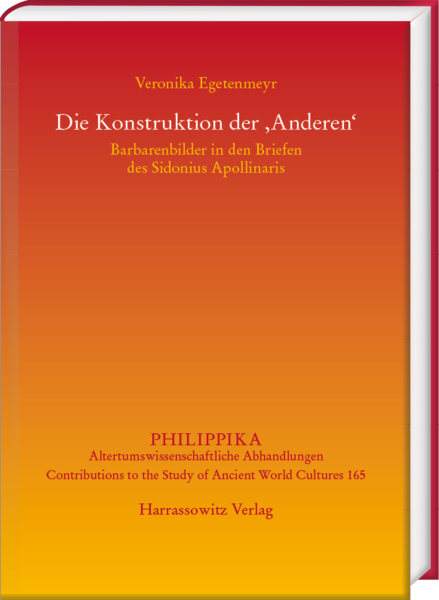
Just out: Veronika Egetenmeyr, Die Konstruktion der ‘Anderen’. Barbarenbilder in den Briefen des Sidonius Apollinaris, Philippika 165, Wiesbaden: Harrassowitz, 2022.
Find it here
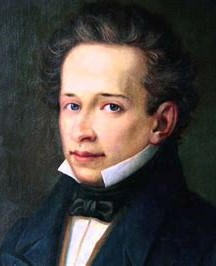
Giulia Marolla has written an article about the traces of Sidonius (and Mamertus Claudianus) in Giacomo Leopardi’s early works: ‘Leopardi lettore di Sidonio Apollinare e Mamerto Claudiano’, Bollettino di Studi Latini 52 (2022) 592-600.
Abstract: This paper analyses the quotations of Sidonius Apollinaris and Mamertus Claudianus in the works of Giacomo Leopardi, whose interest for the two late Latin authors can be traced back to the years he spent studying at his father’s library in Recanati (in particular to 1815-1823). As can be inferred from his epistolary exchange with Niebuhr, for Giacomo, Sidonius constitutes a useful source. He is also an author the young Leopardi admires in light of the peculiar details he relates and because of his refined word choice. Together with Mamertus Claudianus, Sidonius is in particular cited as a source on Fronto and on the evolution of Latin in Late Antiquity. Furthermore, the paper suggests to link one entry in Leopardi’s autograph document C.L.XV.31 (Claudianus= 1762) to Mansi’s 1762 edition of Mamertus Claudianus, which was owned by Leopardi, as can be inferred from his Lettera al Giordani sopra il Frontone del Mai.

1-2 December, Conference at the University of Bielefeld
Diesseits und jenseits der Imperien: Wissensordnung und ethnographisches Vergleichen in der Spätantike
Veronika Egetenmeyr will speak on ‘How to create a community? Sidonius Apollinaris and his others’
Information and registration here

Friday 18 November 14:30 – 16:00
University of Basel, Department of Altertumswissenschaften
Presentation ‘Muse – Musse – Musseraum: neueste Forschungen zu Ausonius, Sidonius und Piccolomini’ by Markus Kersten, Christian Guerra and Ann-Kathrin Stähle
Get flyer here
Everybody welcome. Information anne-sophie.meyer AT unibas.ch
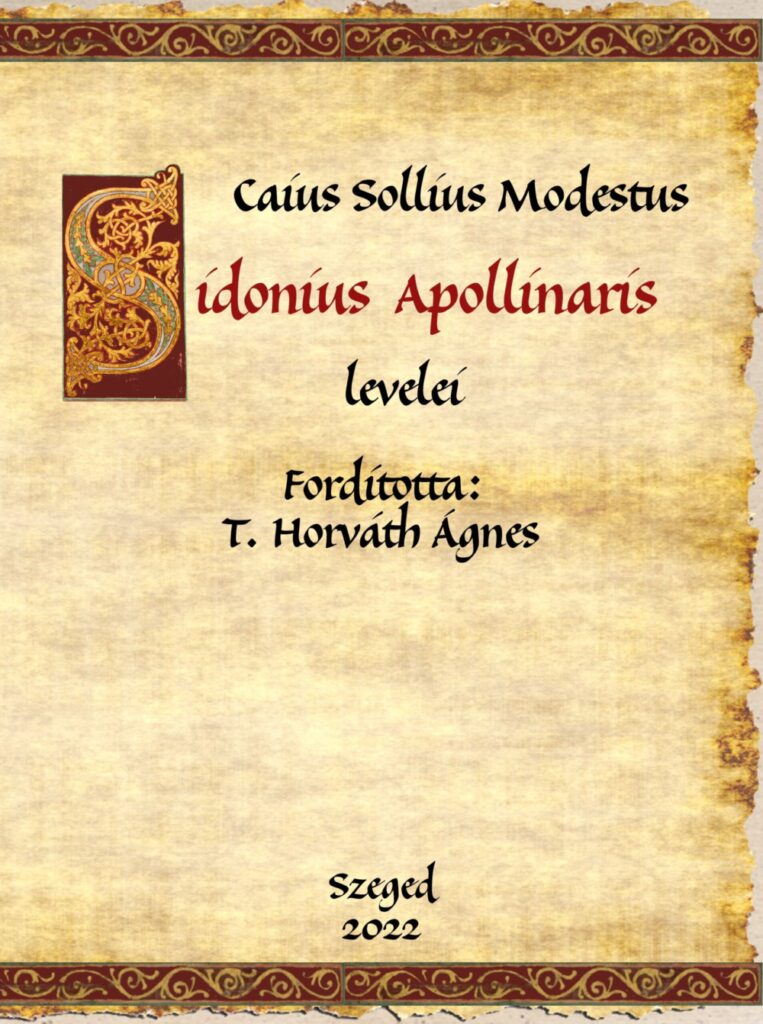
Wednesday 9 November, 16:00 h.
Presentation of Ágnes Horváth’s translation of Sidonius’ letters:
Pál Diószegi-Szabó and Zsuzsanna Hoffmann speak with the author.
Flyer here.
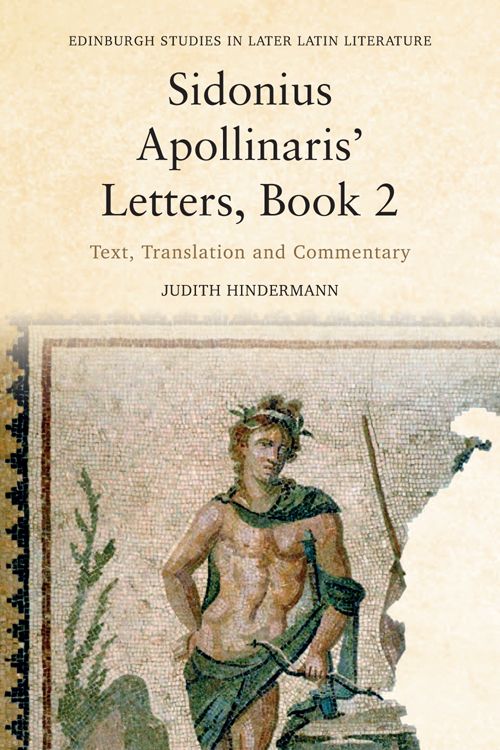
Judith Hindermann has published her translation and commentary of Book 2 of the Correspondence: Sidonius Apollinaris’ Letters, Book 2: Text, Translation and Commentary, Edinburgh Studies in Later Latin Literature, Edinburgh: EUP.
There is a 30% launch discount (NEW30) for anyone purchasing.
This book issues from the SA xxi project (Sidonius Apollinaris for the 21st Century) and begins the ESLLL series (Edinburgh Studies in Later Latin Literature), edited by Gavin Kelly and Aaron Pelttari.
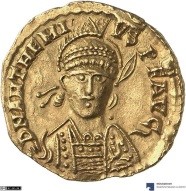
Fabrizio Oppedisano published ‘Une note sur la legatio Arverna à Rome (467 ap. J.-C.)’ in Marie-Pierre Chambon et al., L’Antiquité tardive dans le centre et le centre-ouest de la Gaule (IIIe-VIIe siècles), Revue Archéologique du Centre de la France, Supplement 82, 2022, 69-75.
Abstract
At the end of 467, Sidonius Apollinaris came to Rome to bring petitions from the Arverni to the court of Anthemius. This paper aims to reconstruct the legatio and to place it within the framework of the relations between central government and provincial communities in the specific context of the last years of the Western Roman Empire.
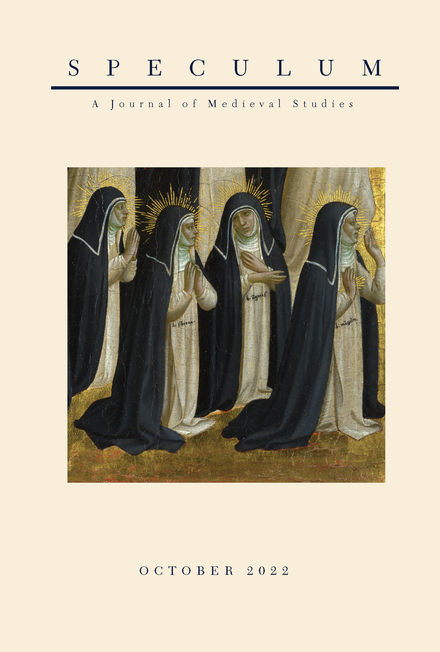
In an article entitled ‘Personification and Gender Fluidity in the Psychomachia and Its Early Reception’ (Speculum 97/4, Oct. 2022), Katherine Breen points out that Sidonius, in Ep. 2.9.4, shelves Prudentius’ works ambiguously between the men’s and the women’s side of the library.
‘Their Christian subject matter classifies them as feminine even as their epic verse form and dense classical allusions situate them within the Roman literary tradition, and so make them appropriate for male readers. Given the association between rhetorical and bodily ornament, one might see Prudentius’s texts as cross-dressing, clothing feminine religious doctrine in a masculine and classical style.’

Ágnes T. Horváth has published her translation into Hungarian of the Letters: Caius Sollius Modestus Sidonius Apollinaris levelei, Szeged: JGYF Kiadó, 2022. Item in publisher’s catalogue here.
She provides the following explanation:
The volume consists of two parts. The first part contains the Hungarian translation of the letters and their explanation in footnotes. It is primarily a literary translation. The accompanying and detailed notes of commentary are not concerned with the Latin text, but rather with the content of the letters and the Hungarian wording. Mythological and other explanations in the commentary aim to help a general audience but also to facilitate further intertextual research. The translation and the notes are based on authoritative editions.
The second part of the volume contains some studies. The purpose of the author is to help Hungarian readers to get to know Sidonius better. The biographical section contains an overview of Sidonius’ life and a reconstruction of his family history. The biographical part includes secondary literature. The reconstruction of the history of his family starts with the analysis of his name and focuses on the investigation of the gens Sollia. It is based on published inscription material by means of which the author attempts to outline the rise of this gens (an article is forthcoming in English).
The final essay of the volume is the reception of Sidonius in Hungary. Sidonius was used as a generic example (speculum regis, personality sketch, panegyricus, propemptikon, epithalamium). Specific quotations of Sidonius can be traced back to the 15th century. Since the 19th century, his works have been used as historical sources, mainly due to his knowledge of the peoples of the Migration Period, especially the Huns and the city of Aquincum. Besides, the researchers of Hungarian prehistory (historians, archaeologists, phrenologists) also used his works. His descriptions and informations can be found in fiction as well, mainly in historical novels and in popular historical writings. The last subsection of the study is a brief summary of Hungarian research on Sidonius.
Appendices include a prosopography of Sidonius, the bibliography of the sources and secondary literature, and an index of names.

On 22 October, Margot Neger will be organising a workshop on mixing prose and verse in late antique literature. She herself is to speak on “Prose letter and verse epitaph: Sidonius Apollinaris on the violation of his grandfather’s tomb (Ep. 3.12)”.
Download programme here. Contact neger.margot AT ucy.ac.cy